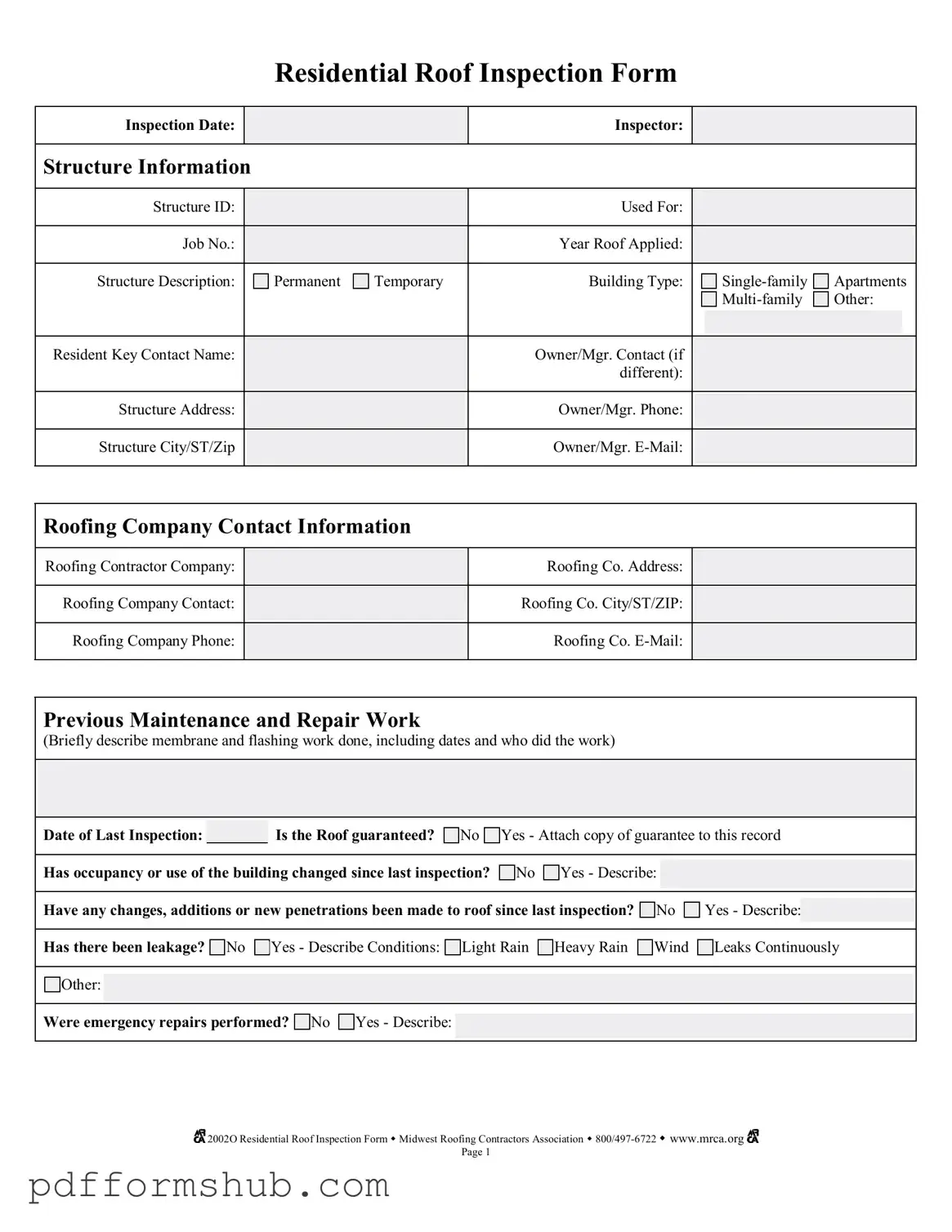The Roof Inspection Form is a vital tool for assessing the condition and integrity of residential roofs. It serves multiple purposes, from documenting inspection details to tracking maintenance history. Each form begins with essential information, such as the inspection date and the inspector's name, followed by specific structure details like the type of building, its address, and contact information for the owner or manager. This information is crucial for identifying the roof's history, including any previous maintenance or repairs that may have been performed. The form also prompts inspectors to note any changes in the building's occupancy or roof modifications since the last inspection. Additionally, it addresses any leakage issues, allowing for a comprehensive evaluation of the roof's performance under different weather conditions. A key feature of the form is its coding system, which categorizes the condition of various components—such as the roof deck, walls, and drainage systems—into three levels: good, fair, or poor. By systematically assessing each area, inspectors can recommend necessary actions, ensuring that any potential problems are identified and addressed promptly. The inclusion of photographic records further enhances the documentation process, providing visual evidence of the roof's condition over time.
